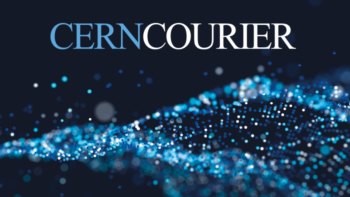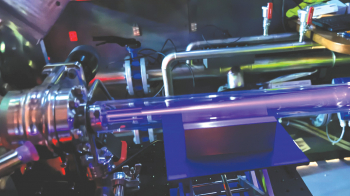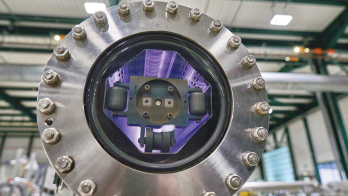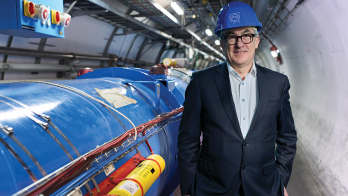Researchers from the Technion – Israel Institute of Technology have used the Accelerator Test Facility (ATF) at the US Department of Energy’s Brookhaven National Laboratory to demonstrate the feasibility of particle acceleration by stimulated emission of radiation (PASER). This is in effect a particle analogue of the laser process.
Levi Schächter at Technion initially demonstrated theoretically the concept behind PASER. Its essence relies on the possibility of transferring energy stored in an active medium (with excited atoms) directly to electrons interacting with the medium, and thereby increasing their energy.
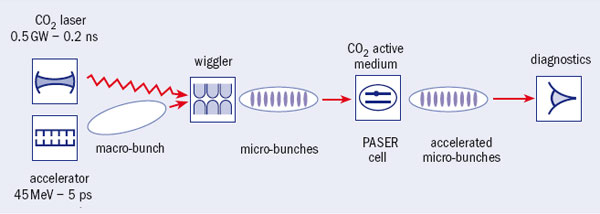
In lasers, photons traversing an active medium stimulate the atoms via collisions so that the atoms give up their excess energy as additional photons forming a coherent beam. In PASER, the atoms in the active medium transfer their energy directly to an electron beam in a coherent way.
To reach significant acceleration in a PASER, a macro-bunch of electrons injected into the PASER cavity should be modulated, forming a train of micro-bunches with a periodicity identical to the resonance frequency of the medium. In other words, coherent collisions of the second kind between the electrons in the train and the excited molecules should occur.
In the proof-of-principle experiment by Samer Banna, Valery Berezovsky and Schächter, electrons in a macro-bunch with an energy of 45 MeV were modulated by their interaction with a high-power CO2 laser in a wiggler, to make a train consisting of about 150 micro-bunches, each several femtoseconds long. About 15% of the electrons in the train collected at the spectrometer at the end of the PASER cavity had absorbed energy stored in the cavity, increasing the total kinetic energy of the macro-bunch by about 0.15%.
Accelerating electrons in this way provides new opportunities as the effective quality factor of such a cavity may become comparable to that of macroscopic superconducting cavities. In particular it will be a challenge to try to use this technique to generate ultra-low-emittance beams.
Further reading
S Banna et al. 2006 Phys. Rev. Lett. 97 134801.
S Banna et al. Phys. Rev. E, in press.


